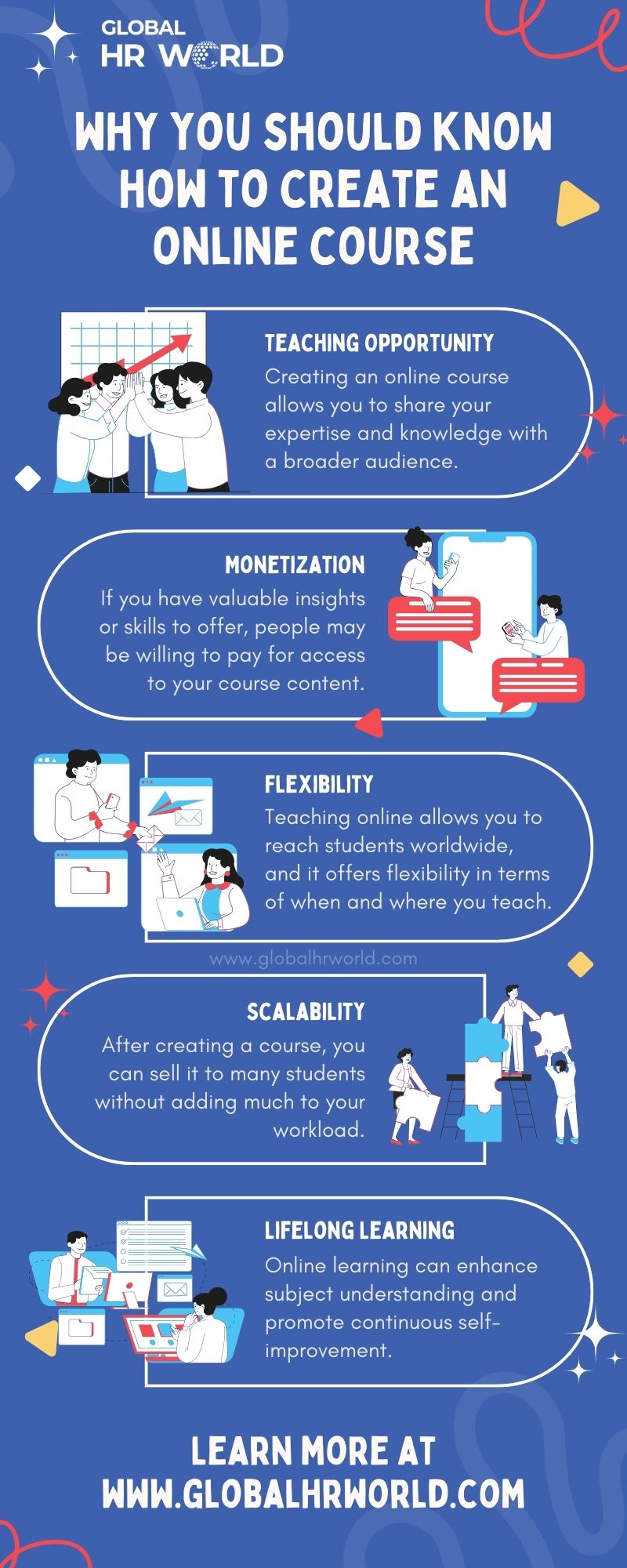The concept of traditional few years. Nowadays, you have access to a huge quantity of education online whenever and wherever you need it. This article will take you through an 8-step process of how to create an online course. After reading this, you’ll walk away with a blueprint for building a new course that positions you as an expert instructional designer. Let’s begin!
How to create an online course effectively?
To effectively create an online course that can properly visualize the objectives of the learning and training program, instructional designers must consider a few things:
Step 1: Identify your target audience
When you create an online course, one of the most crucial things to do is identify the target audience. This will help you determine who your online course is meant for, and it will allow you to create learning content that is relevant and useful to them. Outlining and defining the target audience will help you create an online course that will be in demand. It would help if you had a clear idea of what should be added to the module and what should be ignored.
It will also help you save time and money by avoiding the creation of content that is not relevant or useful to the audience. Ask yourself who you want to help within your course. By taking the time to target the audience and promote your online course effectively, you can increase the chances of your success in creating an online course.
Step 2: Identify learning objectives
Instructional designers must follow a set learning objective while creating an instructional design for e-learning. Without solid learning goals or objectives, you’ll be hard-pressed to build an effective online course. After all, how can you choose relevant learning content and activities if you don’t know what learners are required to be able to do after taking the course? And if you can’t measure whether they’ve reached those objectives, you won’t know whether your course was successful in helping them do that.
Learning goals or objectives are an essential element of any learning method. It generates a structural base and gives learners a vision of what to expect from the course. Clear learning objectives curate proper learning paths that help learners master a topic.
Step 3: Research the organizational goals
To ensure the development of an effective eLearning course, it is imperative to conduct thorough research on the organizational goals. Understanding the objectives that the business strives to accomplish is a crucial step prior to the course creation process. This strategic approach not only facilitates the alignment of the course content with the company’s aspirations but also contributes to significant cost and time efficiencies.
The design of the e-learning course should be meticulously tailored to serve the specific needs of the organization. It should encompass all the essential elements required to foster an outstanding organizational structure. By customizing the course to reflect the company’s targets, you can create a robust educational tool that not only educates but also reinforces the core values and mission of the business. This, in turn, can lead to enhanced performance, productivity, and, ultimately, the realization of the organization’s long-term vision for success.
Step 4: Analyze the compatibility
The compatibility of online courses with devices is important for a seamless learning journey. Prior to tailoring the content of the course, it is important to conduct a comprehensive analysis of how well the eLearning materials will function across the various devices that employees are likely to use. This step is particularly important considering the prevalent trend of employees utilizing their personal devices for work-related tasks.
In light of this, it is crucial to develop an e-learning module that is not only versatile but also universally accessible across a multitude of devices. Such cross-platform compatibility ensures that employees have the flexibility to engage with the learning material in a manner that serves their individual needs and preferences, be it from the comfort of their home or on the go. By accommodating the diverse technological ecosystems within which modern professionals operate, you can facilitate uninterrupted access to the course, thereby enabling a learning journey that is both effective and convenient at any time and from any location.
Step 5: Add engaging elements
eLearning courses come in all different shapes and sizes. You’ve got many options, from PDF docs to video tutorials to webinars. But no matter what type of course content you’re utilizing, there’s one crucial question to keep at the forefront of your mind: How can I make my online courses really engaging for my learners? A customized e-learning development program can be effective only if it has engaging elements.
Depending on your LMS, there are lots of content formats to choose from – Word, PowerPoint, PDFs, webinars, video, audio, graphics, etc. Adding multiple interactive elements in the online learning content keeps the learners engaged and interested throughout the course. Include real-life scenarios and deploy game elements and cognitive theories to deliver core content or specific skills engagingly. It helps them grasp new information quickly.
Step 6: Apply adult learning theories
Applying adult learning theories to online learning is a sophisticated process that involves understanding and integrating various educational principles tailored to the adult learner’s experience. Adult learning, or andragogy, is distinct from traditional pedagogy in that it focuses on the self-directed nature of adult learners, who bring a wealth of experience and require practical application of knowledge.
The self-paced learning approach allows adult learners to find the learning journeys that best fit their learning goals. Plus, it saves the learners from overwhelming situations during the learning journey. In addition, it makes online learning easy as eLearning can be given through multiple formats such as facilitators, webinars, conferencing, asynchronous videos, etc. In short, learners should have the convenience and flexibility of learning at a pace that serves their unique needs. The ultimate objective is to create an online learning environment that is not only informative but also transformative, allowing adult learners to apply their new knowledge and skills to real-world situations.
Step 7: Make online learning user-friendly
Creating a user-friendly online learning environment is essential to ensure that learners can navigate and engage with the content effectively. To enhance the user-friendliness of online courses, provide clear instructions to guide learners in navigating the course. This includes how to access content, the order of modules, and any prerequisites. Use e-learning authoring tools that support responsive design, allowing the content to adapt seamlessly to different devices and screen sizes.
Incorporate a mix of text, images, videos, and interactive components to cater to different learning styles and keep learners engaged. Also, consider the physical disabilities of your learners when creating eLearning courses by following web accessibility guidelines and giving alternative text for images and transcripts for videos. For example – try to avoid using a specific set of colors in the course for some learners suffering from color blindness. Besides, use easy-to-understand language and break up the modules into small chapters. It makes learning the concepts easy and helps them retain the same in their brains for a long time.
Step 8: Assess the online course
Simply creating an eLearning course is not enough. Before you rush to enroll learners, make sure you test the course in different browsers with different user types to identify content-related and technical issues. First, get test users to complete the course and ask for their feedback. Their insight will allow you to revise and refine your content, making it even more engaging. Don’t forget to decide how you’re going to know if the learning outcomes have been achieved.
Assessment results from questions and quizzes, as well as post-course assignments, will allow you to identify if the content is engaging learners and delivering on the learning goals you set out in the preparation stage. Update your courses regularly by asking your learners to complete a survey or review so you can collect their invaluable feedback. You can then use this information to adapt and improve your courses so that they’re hitting the engagement rate you need.
Now, are you creating an online course for your organization? How are you making your online courses engaging? Share your insights in the comments.
Infographic

Knowledge Check!
Frequently Asked Questions (FAQs)
What is an online course?
Online learning is a form of education that allows learners to gather knowledge via the internet. It uses information and communication as a learning mode and delivers electronically, using database and learning management systems.
Are online courses valid?
Online courses offered by recognized organizations can be legally recognized worldwide. Look for courses that give you a certificate of completion.
How can you make online learning more effective?
Creating a user-friendly online learning environment is essential to ensure that learners can navigate and engage with the content effectively. It makes learning the concepts easy and helps them retain the same in their brains for a long time.



